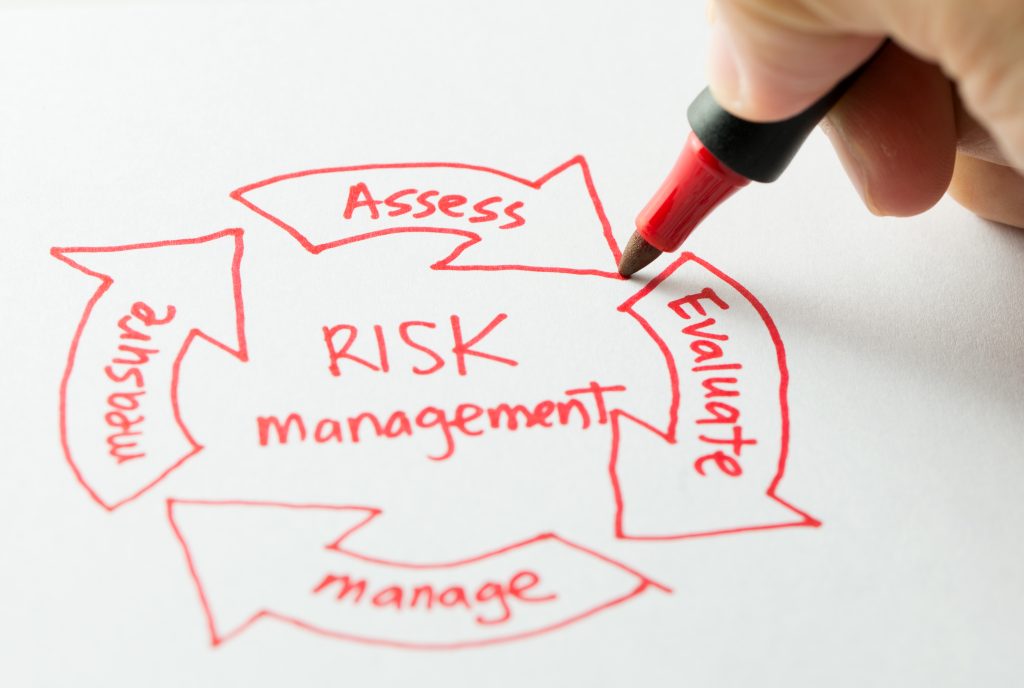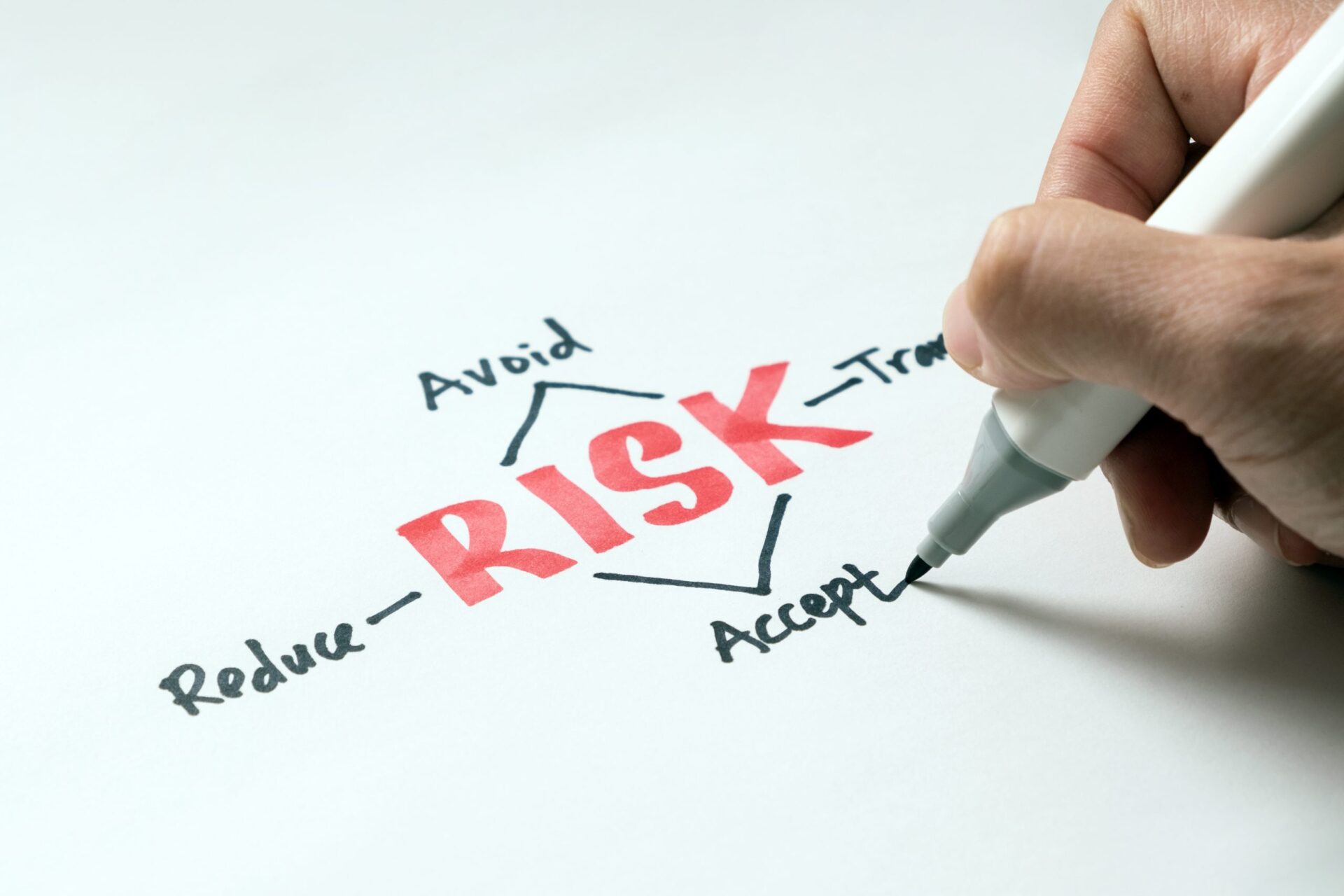The idea that “no risk, no reward” is one of the most misunderstood beliefs in entrepreneurship. While taking risks can lead to growth and innovation, unnecessary or unmanaged risks often result in setbacks, reputational damage, and financial losses. Unfortunately, risk is an unavoidable part of running a business, but it doesn’t have to derail your operations. While business owners are often aware of the intimate risks of their own operations, expert advice from the team at Ferrari & Associates adds significant value to building a risk management strategy, and helps identify exposures you may not be aware of.

We know that for businesses offering professional services, the uncertainty of risk does not have to be overwhelming. For over 15 years, Ferrari & Associates has helped businesses, regardless of their industry, develop and implement a comprehensive risk management strategy through insurance solutions. We have seen firsthand that when a business identifies, assesses and then mitigates potential threats to their business’ success, it demonstrates responsibility and foresight, and creates a safer environment for employees, clients and investors.
For this article, we asked Tammy DeGasperis, Vice President of Commercial Lines, for some valuable insights. Specifically, we inquired about her definition of a risk management strategy, as well as the steps that Ferrari & Associates recommends for developing an effective risk management strategy. Additionally, her expertise sheds light on how businesses can navigate potential risks more effectively.
What is a Risk Management Strategy?
Let’s start with the basics. To begin with, a risk management strategy is a structured approach to identifying, analyzing, and addressing perils and exposure that could impact and interrupt a business’s operations, reputation, and profitability. In particular, for professional businesses, this often includes legal liabilities, financial losses, reputational damage, and compliance failures. Ultimately, the goal of any risk management system is to minimize uncertainty, protect assets, and ensure continuity in the face of unexpected challenges.
Moreover, Ferrari & Associates brings specialized knowledge of industry-specific risks that could help a professional business identify what they could be liable for. This includes, but is not limited to, cyber exposures, employment practices, various professional liabilities, and beyond.
When discussing insurance with our clients we encourage them to conduct a thorough assessment of their business operations. and we help them identify potential exposures. This is one of the first steps; specifically, by identifying potential exposures, we can work towards mitigating losses that may not be immediately obvious. Moreover, we have seen firsthand how emerging risks can quickly escalate into significant challenges, disrupting businesses and threatening their long-term success.
Furthermore, by putting in place customized risk management strategies, we can help businesses stay ahead of potential threats and secure the comprehensive coverage needed to protect their operations and reputation. Consequently, this proactive approach enables companies to navigate uncertainties more effectively and thrive in a constantly changing environment.
Seven Steps to Develop a Risk Management Program
- Identify
You should begin by assessing your business to pinpoint potential risks. Common risks for professional businesses include:
- Errors or omissions in services.
- Breach of contracts or legal obligations.
- Employee disputes or workplace incidents.
- Cybersecurity breaches or data theft.
Engage with your team members, review any past incidents, and consult industry-specific risk reports to build a comprehensive risk profile.
- Evaluate and Prioritize
Obviously, not all risks are created equal. Businesses should categorize identified risks based on their likelihood and potential impact. Break this risk down into two types:
- High likelihood, high impact risks (e.g., a data breach) require immediate attention.
- Low likelihood, low impact risks (e.g., minor contract disputes) can be monitored periodically.
Risk likelihood prioritization ensures that your resources are focused where they are needed most.
- Develop Mitigation Strategies
Mitigation strategies aim to reduce the likelihood or impact of risks. Examples include:
- Ongoing training of employees to avoid common errors.
- Implementing robust cybersecurity measures.
- Standardizing contracts with clear terms and conditions.
- Securing Professional Liability Insurance to cover legal claims.
- Implement Risk Controls
Businesses should put policies, processes, and tools in place to minimize exposure to risks. For instance:
- Adopting project management software to improve accuracy and reduce errors.
- Conducting regular audits to ensure compliance with legal and industry standards.
- Using encryption and multi-factor authentication for data security.
- Implementing employee training programs on workplace safety, data protection and compliance ensures employees are equipped to handle risks effectively and avoid mistakes.
- Standardizing contracts with clear terms and conditions helps prevent misunderstandings and reduces the likelihood of disputes or lawsuits.
- Scheduling and maintaining regular equipment inspections for machinery, vehicles and technology reduces the risk of breakdown and costly repairs.
- Establishing data backup systems and offsite storage ensures that a business’ data can be recovered in the event of a cyberattack, system failure or natural disaster.
- Insurance for a business’ property, liability exposures and even key employees reduces the financial impact of unexpected events.
- Monitor and Review
Risk management is an ongoing process and it requires regularly review of risk management strategy to adapt and grow with industry changes. Monitoring trends and gathering feedback from employees can highlight gaps in the plan and areas for improvement.
- Transfer Risk with Insurance
Transferring financial risk to an insurer is arguably the key component any risk management program. Professional Liability Insurance, General Liability Insurance, Cyber Liability Insurance, and Keyperson Insurance are all types of commercial insurance that Ferrari & Associates is known for. Our role is to help protect against unpredictable events that could otherwise devastate a business.
- A Crisis Management Plan
A crisis management plan is a structured framework that businesses use to prepare for, respond to, and recover from unexpected events that could disrupt operations, harm employees, or damage its reputation. It outlines clear roles, responsibilities, and actions to take during a crisis, such as natural disasters, cyberattacks, or public relations incidents. The plan typically includes communication strategies, contingency measures, and recovery processes to ensure the business can manage the crisis effectively, while minimizing damage and return to normal operations as quickly as possible.
How a Risk Management Program Benefits Professional Businesses
A well-designed and well-defined risk management program equips businesses of all shapes and sizes with the tools and strategies needed to proactively identify, assess, and address challenges. In addition to protecting themselves, building resilience, and enhanced decision-making, here are a few more benefits of a risk management strategy offers:
1. Enhanced Decision-Making
With a clear understanding of risks, businesses can make informed decisions, balancing growth opportunities with potential threats.
2. Financial Protection
Proactively addressing risks helps businesses avoid unexpected expenses related to lawsuits, fines, regulatory breaches, or operational downtime. This approach ensures financial predictability and better resource allocation, allowing businesses to focus on growth and innovation.
3. Stronger Client Relationships
Clients and for some businesses, investors, value businesses that prioritize professionalism and risk awareness. Not surprisingly, a strong risk management strategy demonstrates a business’ accountability and preparedness, thus reinforcing trust and strengthening relationships with clients, investors and partners.
4. Regulatory Compliance
Following industry regulations protects your business from fines, penalties, and reputational harm.
5. Business Continuity
In times of crisis, a comprehensive risk management plan enables businesses to respond swiftly and effectively. This minimizes disruptions, preserves operational continuity, and supports a faster recovery, ensuring that the business can maintain its commitments to clients and stakeholders.
By embedding risk management into every level of operations, professional businesses not only protect themselves but also position themselves as trustworthy, reliable, and future-focused leaders in their industries.
Final Thoughts on Risk Management
Are you using the right resources, are you building a team of qualified individuals?
A risk management program is a strategic advantage. Businesses that proactively identify and address risks, can reduce uncertainty, protect their bottom line, and build trust with clients and stakeholders.
We at Ferrari & Associates encourage our clients to start building their strategy today. Evaluate risks, implement controls, and reach out to our team for guidance. We want to work with you to be sure your insurance coverage supports your plan. With the right measures in place, you can focus on growth while staying prepared for whatever challenges come your way with the right insurance product.
*The information provided in this article is intended for illustrative purposes only and should not be considered as actual insurance advice. Our articles offer insights and general guidance on various insurance topics however, they do not substitute professional advice tailored to your specific circumstances. For expert, personalised insurance advice and solutions, please contact our licensed insurance brokers.*

